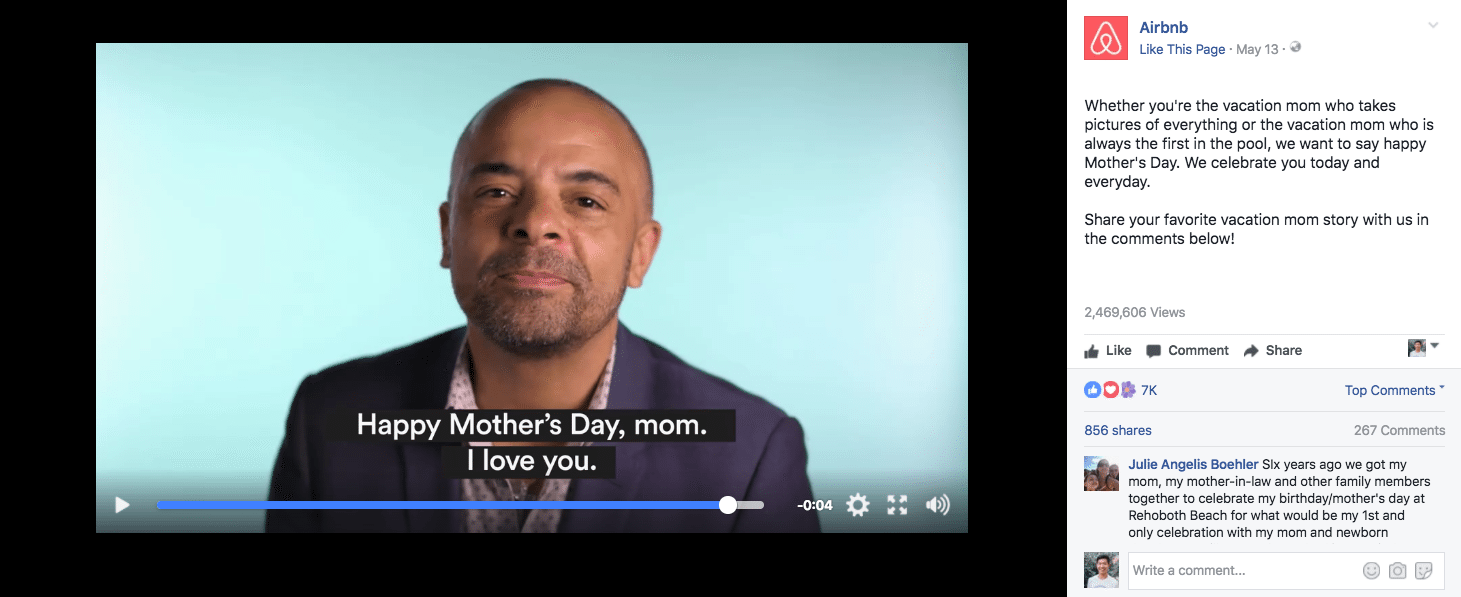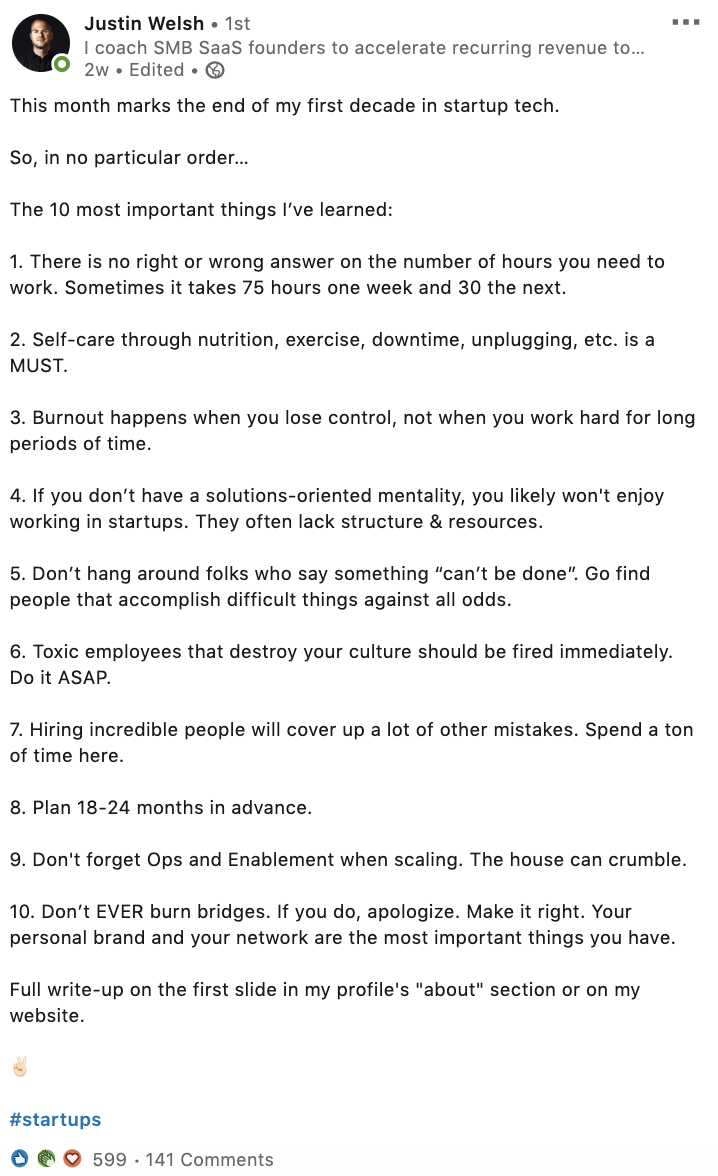Businesses generally have a presence on multiple social networks. This desire is relatively straightforward and understandable: small and medium-size businesses often believe that the more social networks they capture, the more customers and profit they can gain. This approach does work, but on one condition: if the content is created for the audience on each platform. In this article we’ll go over what to post on each social channel to stand out from the crowd!
Each social network was created for a different reason, and the user’s of those networks generally utilize them for different functionalities. For example, an Instagram user would do better with learning information about a brand through a Reel — whereas, a Pinterest user is more receptive to being driven to a blog post.
If you post the same content everywhere, without optimizing them for each social network, there is a high probability that you will hinder your posts engagement levels. When creating a social media calendar, it’s important to consider the most successful types of content on those platforms and what the dimensions are for those posts.
What is the Content Adaptation Across Channels?
Marketers teach us to interact with our target audience where it is convenient for them and at what point they are in the sales funnel. But the trend of recent years has revealed a lot of problems in this regard. By scaling their online presence, companies sacrifice quality.
How to adapt content to different online platforms
- Adjust the content to the social network rules (text volume, format, number, resolution of images, availability and characteristics of videos, availability of surveys, and additional options).
- Customize the content to the form in which users get used to receiving content within a particular social network.
- Change texts: reducing the volume or vice versa, adding details to change the style to a more relaxed and entertaining one.
- Add unique posts to each channel: make a list of categories relevant for each separate platform. Encourage users to subscribe to all media to not miss out on essential and genuinely unique information.
- Correction of illustrations is the most economical way to draw attention to your posts in the feed without changing the text component.
A universal recommendation, perhaps, is only one – do not be boring! Do not write the same thing just because you have nothing to say. Often, conciseness and laconism are perceived much better than an abundance of meaningless content.
Agency Vista has analyzed the most popular social networks and collected recommendations on which content is most effective on each social channel.
What to Post on Each Social Media Platform
In every social network, users have their own behavior patterns and content consumption patterns. To add more, the audience itself is somewhat different. Let’s dive into each social media channel separately.
Facebooks audience is continually growing. In the distribution of global Facebook users, 19.3% were male users between 25 and 34 years old and 13.1% were female users in the same age range. While Facebook users can be found at all ages, 72.8% are within the 18–44 years old range.
Among its many users, 98.3% of them accessed Facebook via any kind of mobile device and 79.9% of users only used mobile. This is particularly important for businesses who have Facebook Pages. When crafting Facebook ads and posts on the desktop site, you still need to ensure that they look good on mobile, too.
Between Live and native videos, video content totaled to 15% of all contenton the network. In 2020, most of this video content (71%) is actually published by Pages with over 100k fans. Here is a great video example from Airbnb, they encouraged their audience to share their favorite vacation mom story on their Mother’s Day video.

All this contributes to the popularity and growth of the importance of videos on Facebook. Upload your videos to Facebook directly instead of adding YouTube links. You can consider educational videos such as how-to guides or blog post summaries. Facebook is the most popular (75%) social channel for marketers to post videos, followed by YouTube (70%) and Instagram (58%).
Here are some additional Facebook post ideas:
- Ask questions
- Behind-the-Scenes
- Trending topics
- Branded graphics
- Tell stories
- Product photos
- Infographics
- Blog posts
- Industry tips
- Contests and giveaways
- Discounts and sales
Instagram is one of the most dynamically developing social networks. Recent social media demographics continue to point to a predominantly female (34.3%) user base under 34.
In this social network, the content’s main component is a photo, so pay special attention to the visual part of the post. It should look high-quality and create the atmosphere of your brand and text (which is read after the image has attracted attention). Images and video should ideally be beautiful, thoughtfully composed, and artfully presented.
Among the main types of high-quality photos are product photos, user-generated content, and behind-the-scenes photos. Check out more examples from the best brands on Instagram, according to HubSpot.
Motivational publications and quotes also tend to appeal to the audience. Quotes are placed on a white background or applied to the image related to a product or brand. Such applications as Canva and Adobe Spark will be great helpers to craft creative images.
Stories is another popular Instagram tool that has become a separate platform, a separate channel for promotion. Stories are an excellent solution for storytelling, how-to guides, sharing a list, blog promotion, sharing news, updates, etc.
The more diverse the content is, the higher the conversion rate will be. Link your content to your brand. Tell your audience about the product’s features, service, share the story of creation, production technology, features of the service, etc.
LinkedIn has proven itself well for digital marketing. The platform is not created for idle communication and entertainment. Its users mostly visit the platform to search for work, communicate with colleagues, build business relationships and get up-to-date professional information. According to statistics, 57% of LinkedIn users are men, and 43% are women. 59.9% of LinkedIn’s users are between 25 and 34 years old.
Do not hesitate to share career information (company culture, employees’ experiences and achievements, open vacancies), company news and milestones, and any other professional content within your industry.

Here are some additional LinkedIn post ideas:
- Share something that inspires you
- Answer a common question you get from clients
- Create a top 10 list
- Create or share an infographic
- Share the story of how you got to where you are
- Spotlight how a customer uses your product/service
- Talk about a common misconception in your industry
- Do a roundup of your tech stack
- Share the history of your company or brand…
- Share what you learned from the last book you read
- Share a highlight from your favorite podcast
- Share advice on what your audience needs to start/stop doing
- Share your best productivity or time-saving hack
- Share your morning routine, work routine, or how you plan your day (a day in the life of “x”)
- Share a milestone
Twitter is a popular platform that allows users to send short text messages (up to 140 characters) and attach links to images, videos, or the full version of the text. Approximately six of every 10 (63%) Twitter users worldwide are between 35 and 65. In terms of global gender demographics, Twitter is more prevalent among males than females.
Have you ever wondered why some of your tweets are successful while others go unnoticed? It does depend on the type of content you share.
Information about planned, ongoing, and past events is distributed on Twitter faster than on any website or social network. So, the platform is a great choice to post industry news, company news, product news. Your post should convey a particular idea, exciting information, or opinion to the audience.
Announce about ongoing promotions, publish exciting photos and videos related to your industry, post links to valuable materials, share your company’s opinions on issues discussed on the web. List posts and expert guides attract traffic the best. And tweets with a link to this type of content generate the most retweets. Moreover, blog posts and GIFs have become very popular on Twitter. To increase the effectiveness of your Twitter campaign, ask your employees to announce content through their accounts.
Having seen some serious growth, Pinterest has generated an additional 100 million users over the last year. Pinterest started 2020 with around 320 million monthly active users. And now their user base has now increased to 459 million monthly active users. This means Pinterest now has more monthly active users than both Twitter and Snapchat combined.
Unlike Instagram, photos on Pinterest are primarily vertical. Infographics are one of the most popular types of content on the channel. There is no need to be a designer to create an engaging infographic. Get the most of such graphic design tools like Piktochart and Venngage to craft attractive visuals.
Here are some Pinterest suggestions for content marketers
- Apply for Rich Pins for your website or blog
- Use multiple images within a pin
- Create Pins with text in them
- Create a “Pin It for Later” link
- Keyword-rich boards for your blog posts
A Few Tips on Creating Engaging Content
1. Optimize content for each social media channel
As mentioned above, it is vital to fill the resource with the relevant materials that will interest the specific online platform’s target audience, allow you to establish closer contact with it, and increase the overall level of loyalty. Write the relevant captions using the right tone of voice and hashtags, add visuals with the correct dimensions.
2. Turn “evergreen” content into images
Choose the best publication with “evergreen” content and present it as a picture. Make a beautiful infographic, diagram, map. An image can even be made from a quote of a famous person or a historical fact – write it on a beautiful background and save it in a graphic format.
3. Use a clear CTA
A call to action or CTA motivates readers to act. Such a call helps them connect, download, buy, participate, enroll, and take any other actions. This is a kind of marketing lever of persuasion, which very often brings positive results to brands. Most often, authors add it at the end of posts or inside images on social networks. CTA can be displayed as a button, a text link, or be a picture.
4. Post at the right time
Discover the best times to post on social media. It is essential to choose the best time to publish posts when most of the audience is active, and the social network is not oversaturated with other posts. By posting at the right time, you get more reach, traffic, and sales.
5. Write solid headlines and captions
When many accounts are used as trading platforms, it is invaluable to catch the reader’s attention from the first second. How to encourage your followers to read a post to the end? Firstly, publish bright and beautiful photos, and secondly, write catchy headlines and captions. Your task is to intrigue, engage, and encourage further reading.
6. Use hashtags correctly
This is an excellent solution to make sure that as many people see your post as possible. But remember that hashtags do not work the same on different platforms. For example, they are an essential factor in Instagram engagement, but on Facebook, the situation is a little different. While the optimal number of hashtags on Instagram is 5-10, use 1-2 on Facebook.
7. Proofread your post before publishing
Illiterate texts harm the reputation of a brand or blogger. To prevent this from happening, check the text before publishing: it must be clear, unique, and literate. Check out 12 quick editing tips for social media.
Conclusion
Remember, social media marketing is a brand’s dialogue with the audience, and the most crucial function of social media content is to attract potential customers. For successful posting, you need to understand each platform’s audience to determine the appropriate method of communication with users. The content should be interesting, helpful, and unique.
Follow our tips and recommendations, and adjust the content to the audience’s needs on each separate online platform. Undoubtedly, competent preparation of the post materials for social networks will facilitate your marketing goals.
